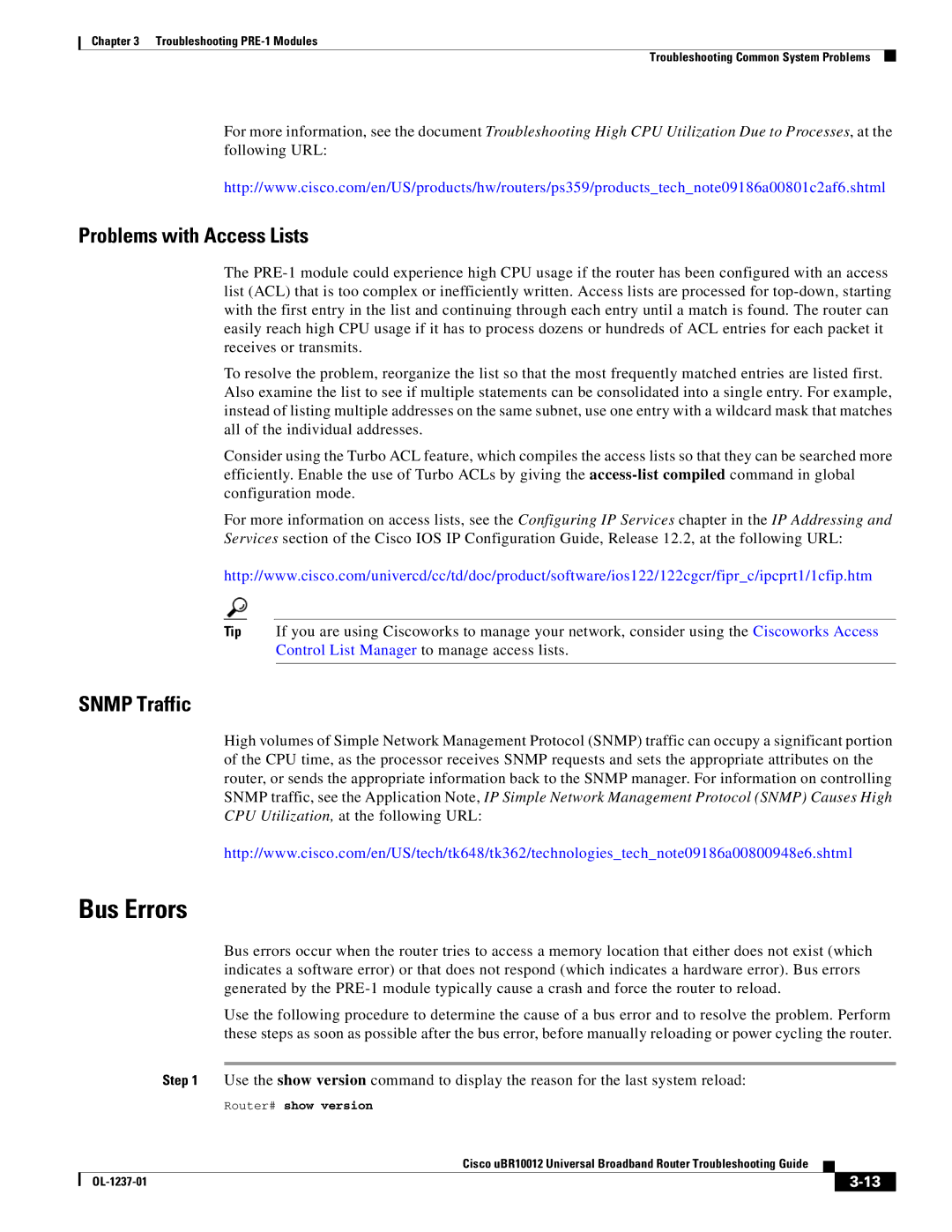
Chapter 3 Troubleshooting
Troubleshooting Common System Problems
For more information, see the document Troubleshooting High CPU Utilization Due to Processes, at the following URL:
http://www.cisco.com/en/US/products/hw/routers/ps359/products_tech_note09186a00801c2af6.shtml
Problems with Access Lists
The
To resolve the problem, reorganize the list so that the most frequently matched entries are listed first. Also examine the list to see if multiple statements can be consolidated into a single entry. For example, instead of listing multiple addresses on the same subnet, use one entry with a wildcard mask that matches all of the individual addresses.
Consider using the Turbo ACL feature, which compiles the access lists so that they can be searched more efficiently. Enable the use of Turbo ACLs by giving the
For more information on access lists, see the Configuring IP Services chapter in the IP Addressing and Services section of the Cisco IOS IP Configuration Guide, Release 12.2, at the following URL:
http://www.cisco.com/univercd/cc/td/doc/product/software/ios122/122cgcr/fipr_c/ipcprt1/1cfip.htm
Tip If you are using Ciscoworks to manage your network, consider using the Ciscoworks Access Control List Manager to manage access lists.
SNMP Traffic
High volumes of Simple Network Management Protocol (SNMP) traffic can occupy a significant portion of the CPU time, as the processor receives SNMP requests and sets the appropriate attributes on the router, or sends the appropriate information back to the SNMP manager. For information on controlling SNMP traffic, see the Application Note, IP Simple Network Management Protocol (SNMP) Causes High CPU Utilization, at the following URL:
http://www.cisco.com/en/US/tech/tk648/tk362/technologies_tech_note09186a00800948e6.shtml
Bus Errors
Bus errors occur when the router tries to access a memory location that either does not exist (which indicates a software error) or that does not respond (which indicates a hardware error). Bus errors generated by the
Use the following procedure to determine the cause of a bus error and to resolve the problem. Perform these steps as soon as possible after the bus error, before manually reloading or power cycling the router.
Step 1 Use the show version command to display the reason for the last system reload:
Router# show version
Cisco uBR10012 Universal Broadband Router Troubleshooting Guide
|
| ||
|
|
